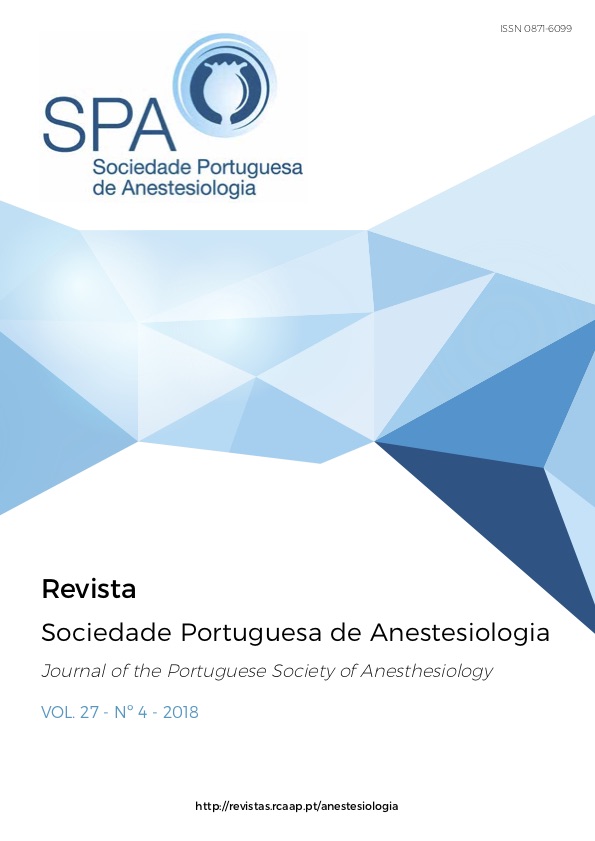Anestesia para cirurgia major da coluna no adulto
DOI:
https://doi.org/10.25751/rspa.15283Resumo
Introdução - A cirurgia da coluna evoluiu, nas últimas duas décadas, para uma multidisciplinariedade de áreas médicas, incluindo neurocirurgia, ortopedia, medicina da dor e neurorradiologia. A patologia da coluna é vasta e engloba doentes cada vez mais idosos e com mais comorbilidades, ao mesmo tempo que existem várias técnicas cirúrgicas às quais o anestesiologista tem de se adaptar.
Material e Métodos - Foi realizada uma revisão compreensiva nas bases de dados Medline, Embase e Cochrane, utilizando as seguintes palavras-chave: anestesia, cirurgia da coluna, lesão cervical, neuromonitorização, perda de visão perioperatória e trauma vértebro-medular.
Resultados - As principais complicações da cirurgia da coluna são: paralisia, hemorragia massiva, infeção, relacionadas com o posicionamento, complicações respiratórias no pós-operatório e dor crónica. Alguns dos aspetos que o anestesiologista tem de ter em conta incluem, a abordagem da via aérea, monitorização e fármacos, posicionamento do doente, técnicas poupadoras de sangue e possíveis complicações.
Discussão e Conclusões - Os resultados bem-sucedidos após cirurgia major da coluna vertebral dependem de uma técnica anestésica apropriada e considerada. A incidência de complicações pode ser reduzida pela atenção aos detalhes e uma boa compreensão das especificidades cirúrgicas.
Downloads
Downloads
Publicado
Como Citar
Edição
Secção
Licença
Os artigos estão livremente disponíveis para serem lidos, descarregados e partilhados a partir do momento da sua publicação.
A RSPA reserva-se o direito de comercialização do artigo enquanto parte integrante da revista (na elaboração de separatas, por exemplo). O autor deverá acompanhar a carta de submissão com a declaração de cedência de direitos de autor para fins comerciais.
Relativamente à utilização por terceiros a Revista da SPA rege-se pelos termos da licença Creative Commons “Atribuição – uso Não-Comercial (CC BY-NC).
Após publicação na RSPA, os autores ficam autorizados a disponibilizar os seus artigos em repositórios das suas instituições de origem, desde que mencionem sempre onde foram publicados.


